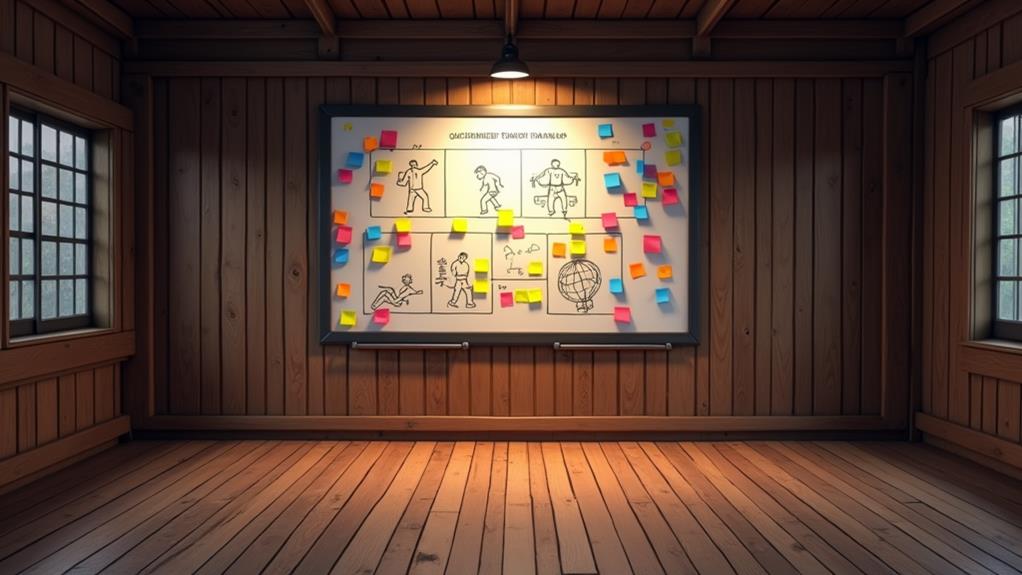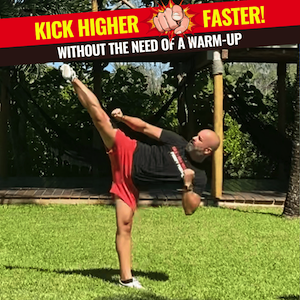As a martial artist over 40, you need adaptive training regimens that accommodate your physical limitations while maintaining workout intensity. You can enhance flexibility and balance with disciplines like Tai Chi, Aikido, and Brazilian Jiu-Jitsu, which focus on low-impact techniques and controlled movements. Regular mobility training improves joint health and range of motion, reducing injury risk. To manage pain, incorporate natural recovery techniques like muscle shaking and relaxation practices. By customizing your training with expert guidance, you can optimize your performance and recovery. And with the right approach, you can access more effective training strategies tailored to your unique needs.
Regimens for Limited Mobility
Harness the benefits of adaptive regimens to overcome limited mobility as a martial artist over 40. You can modify your training to accommodate physical limitations while maintaining the intensity and effectiveness of your workouts.
Incorporating Tai Chi into your routine is an excellent way to start, as its slow and controlled movements enhance balance and flexibility.
As a martial artist with limited mobility, you should prioritize low-impact techniques, such as Aikido and Brazilian Jiu-Jitsu, which focus on joint locks and ground movements that reduce strain on the body.
Regular mobility training is also essential, as it improves joint health and range of motion. Loaded mobility exercises like inward shoulder rotation can be particularly beneficial.
Don't forget to customize your recovery process with techniques like muscle shaking and gentle overhead movements, which promote pain management and overall recovery.
Enhancing Flexibility and Balance
The key to maintaining peak physical condition as a martial artist over 40 lies in enhancing flexibility and balance. As you age, you lose flexibility and balance, which can hinder your martial arts performance and increase the risk of injury.
Regular mobility training can help prevent this decline by enhancing joint health and promoting flexibility.
You can incorporate exercises such as Tai Chi, soft martial arts like Aikido and Brazilian Jiu-Jitsu, or utilize loaded mobility exercises with clubs or maces into your routine.
These activities enhance joint strength and flexibility while reducing the risk of injury.
Studies have shown that martial arts training positively affect balance and flexibility in older adults, mitigating the risks associated with sedentary lifestyles and improving overall mobility.
Effective Pain Management Strategies

As you focus on enhancing flexibility and balance, you'll also need to develop effective strategies for managing pain. This is especially important for martial artists over 40, as aging bodies are more prone to injury.
To mitigate this risk, incorporate daily mobility training into your routine, which not only improves joint health but also reduces the risk of non-contact injuries. This will allow you to maintain physical fitness and muscle strength while minimizing downtime.
Being aware of your body signals is essential for effective training. Pay attention to your body composition and adjust the intensity and recovery practices accordingly to prevent pain and injuries.
Instead of relying on painkillers like Advil, try natural recovery techniques such as mobility exercises and relaxation practices to alleviate pain and enhance motivation. By prioritizing pain management, you'll be able to optimize your training sessions and maintain a consistent routine.
Regularly consulting with experts can also provide personalized strategies for pain management and recovery, ensuring your training regimens are effective and tailored to your individual needs.
Structured Training for Recovery
Regularly incorporating structured training into your regimen is essential for recovery, especially as a martial artist over 40. As you age, your body takes longer to recover from physical activity, making it vital to prioritize recovery in your training program.
A well-structured training program should include specific rest days and active recovery sessions to prevent persistent soreness and injuries. You should also monitor the frequency of your martial arts and strength training sessions to support muscle recovery and growth.
This helps maintain your fitness levels while reducing the risk of overtraining. Front-loading recovery techniques such as mobility drills and cooldowns into your training sessions optimizes performance and prepares your body for subsequent workouts.
Personalized Training Adjustments

Martial artists entering their 40s often face unique challenges that require personalized training adjustments to maintain performance levels and prevent injuries. As you navigate this phase, you'll want to prioritize low-impact techniques, such as Tai Chi or Aikido, which can help enhance your flexibility and balance while minimizing injury risk.
In addition to adopting gentler training methods, it's crucial to focus on mobility exercises that improve your joint health and recovery. This can include simple exercises like shoulder rolls, knee lifts, and ankle circles. By incorporating these into your daily routine, you'll find that you can move with greater ease and experience reduced soreness after training.
As you fine-tune your personalized training adjustments, you'll want to continually assess your training plan and make adjustments to suit your needs.
With guidance from experienced instructors who specialize in training seniors, you'll be able to gradually increase your training intensity while still honoring your body's unique limitations and abilities.



